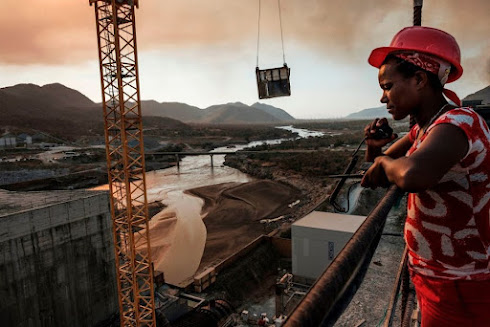Dam Discourse I: Why Build Dams?
The question must be asked... why are dams such a popular modernisation intervention in Africa?
Alongside the GERD, there has been a resurgence of dam construction across the African continent. Dams were popular development solution throughout the 20th Century, bringing the African continent to have the world's largest capacity of large dams. In today's environmental discourse, there is a now a renewed interest from the World Bank to expand lending for hydropower projects, seeing dams as a balance between low-carbon technology and meeting development needs around energy. It is the particular belief from development agencies that energy is central to countries development needs with hydropower percieved to have considerable potential of providing clean, cheap, and most importantly, dependable electricity to hundreds of millions of people who do not yet have it. 60 million Ethiopians alone lack direct access to electricity, which is a key part of Ethiopia's motivation behind the GERD. The transboundary nature of the GERD means Ethiopia stands to benefit from the GERD by being able to export electricity to the similiarly energy starved Sudan (the World Bank predicts Ethiopia could become Africa's largest energy exporter, bringing in $1billion a year), much as Mali has done with the Manantali Dam, to which it provides surplus power to Senegal and Mauritania.
Water is an economic good in the eyes of many developing states, especially in dryland areas with inconsistent seasonal rainfall. Dams help to reconciling the often conflicting demands on freshwater resources by allow for more predictable river flows that facilitate consistent cultivation and water withdrawal. Sudan for example has a huge dependency on irrigation and rainfall for its agricultural sector and the GERD has the potential to facilitate irrigation of around 500,000ha of new agricultural lands as well as significantly reducing flooding. Sudan hopes to grow cash crops for export as a result.
Finally, for developing nations, these projects represent a huge source of national pride. The GERD is a unifying project for such a divided nation like Ethiopia, with the project entirely self-funded. This sets it apart from many other states across the continent who have had to approach donors, representing a significant step-change in the nation's modernisation.
However, it is all well and good for countries to build dams, so long as the project is appropriately managed. You cannot ignore the patterns of disruption that have arisen from mismanagement and skewed political aims affecting the 'net good' of dam projects. There are conflicts over potential use and the energy argument has been proven to be flawed. In West Africa, the Akosombo Dam and the Lake it created, Lake Volta, other potential uses (fishing, shipping, irrigation) were completely dropped from plans as they impacted the potential amount of HEP that could be generated. In the case of the GERD, there could well be a negative impact on irrigation in Sudan at the expense of electricity generation. After all, energy is the Ethiopia's main priority.

The extent of flooding behind the GERD (Source). It is estimated up to 1 million have been displaced.
That is also not to mention direct and indirect influences dam construction has on the ecosystem of a river and its communities. In 2009, the World Bank itself acknowledged dam construction has "overwhelming environmental and social risks". Due to the top-down approach from states and development agencies in regard to authorising and constructing dams, barley any consideration taken for the impact on the local communities along the watercourse who are displaced and disrupted. The waterscape becomes heavily politicised, as states triage the costs felt by those displaced by dam building against those receiving benefits from irrigation and electricity. Local subsistence farming communities do not see the macro economic and political benefits, facing displacement and poor crop production from a reduction in water quality. In the case of the Bakolori Dam in Nigeria, the food production lost to reduced flooding into floodplains was 3.1 million Naira (currency of Nigeria), exceeding the 2 million Naira gain in rice production.
On breakdown, dam benefits are not so clear, but that does not stop countries from building them.




Comments
Post a Comment